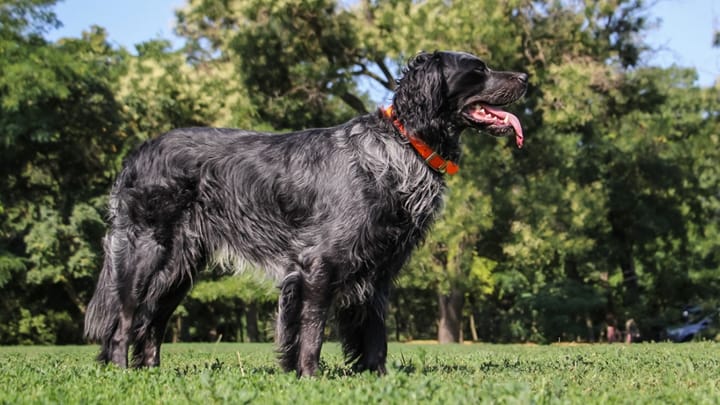Blue Picardy Spaniel
Other names : Bleu Picard, Épagneul Bleu de Picardie

The Blue Picardy Spaniel was developed in France during the early 20th century. She descends from the Picardy Spaniel and English Setter. Like her close relatives, the Blue Picardy Spaniel is a highly energetic dog that needs around two hours of exercise each day. This versatile hunting dog can also make a great family pet, although they’re extremely rare outside of France and Northern Canada.
|
Life expectancy |
The Blue Picardy Spaniel has a life expectancy of between 12 and 14 years |
|
Temperament |
|
|
Size |
Medium
|
|
Adult size |
Female
Between 22 and 27 in
Male
Between 22 and 24 in
|
|
Adult weight |
Female
Between 33 and 40 lb
Male
Between 33 and 40 lb
|
|
Coat colour
Speckled blackish gray. The general appearance is that of a bluish dog, with black spots. |
Black Blue |
|
Type of coat
Medium length. Single layered. Flat or wavy. |
Long Wavy |
|
Eye colour
Dark. |
Brown
|
The Blue Picardy Spaniel isn’t actually blue, although her grey coat takes on a “bluish” hue under certain kinds of lighting.
Around a 1,000 Blue Picardy Puppies are born in France every year. They’re also popular in Canada but virtually unheard of everywhere else.
Her exercise demands can’t be underestimated. She needs at least two hours of intense physical activity every single day.
More details about the Blue Picardy Spaniel
Blue Picardy Spaniel: Origins and history
In the early 20th century, the area around the mouth of the river Somme was a popular hunting spot for French and British game hunters, but the British hunting parties were required by law to quarantine their dogs in the Picardy area. These English setters were cross-bred with french hunting dogs, and the Blue Picardy Spaniel was born. It was recognised as a separate breed in 1938 and is still a popular working dog in France and the French-speaking areas of Canada.
Physical characteristics of the Blue Picardy Spaniel
The Blue Picardy Spaniel has a low, athletic frame, and is well built for work. This is a well-proportioned dog with a rich, silky coat. Her proud and alert posture reflects her personality and physical capabilities. She has a relatively broad, oval skull, and calm, expressive eyes. Like most other spaniels, the Blue Picardy has long floppy ears.
FCI classification of the Blue Picardy Spaniel
-
Group 7 - Pointing Dogs
-
Section 1 : Continental Pointing Dogs
Blue Picardy Spaniel: Characteristics
Blue Picardy Spaniel: Behaviour
Training a Blue Picardy Spaniel
The Blue Picardy is a naturally obedient breed that responds really well to the right training methods. Sessions should be short, fun, and challenging.
Blue Picardy Spaniel: Lifestyle
Breed compatibility Blue Picardy Spaniel
Blue Picardy Spaniel: Purchase price
We do not have enough data to set an average price, but you can expect to pay upwards of £800 for a well-bred puppy. Looking after a dog of this size typically costs between £70 to £100 a month, including food, medical/insurance, and incidental expenses.
Blue Picardy Spaniel: Grooming
Her long, silky coat requires a weekly brush to avoid knots. She should also be checked over after any hunts or forest walks.
Blue Picardy Spaniel: Health
The Blue Picardy Spaniel is a well-bred and very healthy animal with an average lifespan of 13 years.
Working dogs tend to be strong and robust, and the Blue Picardy Spaniel is no exception.
Picardy Spaniels have no problems dealing with warmer weather, although it’s best to avoid exercising them during the hottest parts of the day. They can get overexcited which may lead to heat exhaustion.
These hardy dogs are well equipped for the cold weather. They have dense, insulating coats designed to keep them warm, and can safely dive in ice to recover game.
She is very greedy, and the risk of weight gain is significant. Maintaining a healthy body weight is crucial for any dog’s long-term health.
- Ear infections
- Arthritis
- Obesity
- Hunting injuries




